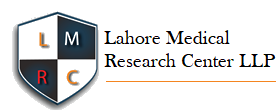Association of maternal age and presence of non-communicable diseases in consanguineous marriage with congenital abnormalities in infants
DOI:
https://doi.org/10.54393/mjz.v2i2.19Keywords:
Consanguineous marriages, child birth, maternal and pediatric healthAbstract
Consanguineous marriages are most common among communities where most families are of traditional and extended types. It has been seen that females who conceive at a very young age or have any non-communicable disease have higher chances to have off springs with congenital abnormalities. Objective: To find out the association between maternal age and non-communicable diseases with congenital abnormalities in children. Methods: It is a cross-sectional study performed at District Head Quarter Hospital, Okara, including 100 married participants in the age range of 19-55 years after obtaining their informed consent Results: It was observed that 57% of mothers were below 20 at marriage, 42% were above 20 at marriage and 1% of mothers were above 30 at marriage, were having children with congenital abnormalities. 22 out of 100 mothers had obesity, 15 had diabetes and 21 had CVD when pregnant. The infants born to these mothers suffered from brain anomalies, cleft lip and cleft palate, CVD and diabetes. The results were obtained with p less than 0.05. Conclusion: Congenital abnormalities were more common among children with mothers aged below 20 or 25 and suffering from any metabolic or genetic disorder.
References
Tadmouri GO, Nair P, Obeid T, Al Ali MT, Al Khaja N, Hamamy HA. Consanguinity and reproductive health among Arabs. Reproductive health. 2009 Dec;6(1):17. doi.org/10.1186/1742-4755-6-17
Bittles AH, Black ML. The impact of consanguinity on neonatal and infant health. Early human development. 2010 Nov 1;86(11):737-41. doi: 10.1016/j.earlhumdev.2010.08.003.
Hussain R, Bittles AH. The prevalence and demographic characteristics of consanguineous marriages in Pakistan. Journal of biosocial science. 1998 Apr;30(2):261-75. doi: 10.1017/s0021932098002612.
Hamamy H. Consanguineous marriages. Journal of community genetics. 2012 Jul 1;3(3):185-92. doi: 10.1007/s12687-011-0072-y
Stoll C, Alembik Y, Dott B, Feingold J. Parental consanguinity as a cause of increased incidence of birth defects in a study of 131, 760 consecutive birthsxs. American Journal of Medical Genetics Part A. 1994 Jan 1;49(1):114-7. doi: 10.1002/ajmg.1320490123.
Papathakis PC, Singh LN, Manary MJ. How maternal malnutrition affects linear growth and development in the offspring. Molecular and cellular endocrinology. 2016 Nov 5;435:40-7. doi: 10.1016/j.mce.2016.01.024.
Ameen SK, Alalaf SK, Shabila NP. Pattern of congenital anomalies at birth and their correlations with maternal characteristics in the maternity teaching hospital, Erbil city, Iraq. BMC pregnancy and childbirth. 2018 Dec;18(1):1-8. doi: 10.1186/s12884-018-2141-2.
Nabulsi MM, Tamim H, Sabbagh M, Obeid MY, Yunis KA, Bitar FF. Parental consanguinity and congenital heart malformations in a developing country. American journal of medical genetics Part A. 2003 Feb 1;116(4):342-7. doi: 10.1002/ajmg.a.10020.
Hall J, Solehdin F. Folic acid for the prevention of congenital anomalies. European journal of pediatrics. 1998 May 1;157(6):445-50. doi: 10.1007/s004310050850.
Al-Gazali LI, Dawodu AH, Sabarinathan K, Varghese M. The profile of major congenital abnormalities in the United Arab Emirates (UAE) population. Journal of medical genetics. 1995 Jan 1;32(1):7-13. doi: 10.1136/jmg.32.1.7
El Koumi MA, Al Banna EA, Lebda I. Pattern of congenital anomalies in newborn: a hospital-based study. Pediatric reports. 2013 Feb;5(1):20-3. doi: 10.4081/pr.2013.e5
Dart AB, Ruth CA, Sellers EA, Au W, Dean HJ. Maternal diabetes mellitus and congenital anomalies of the kidney and urinary tract (CAKUT) in the child. American Journal of Kidney Diseases. 2015 May 1;65(5):684-91. doi: 10.1053/j.ajkd.2014.11.017.
Naim A, Al Dalies H, El Balawi M, Salem E, Al Meziny K, Al Shawwa R, Minutolo R, Manduca P. Birth defects in Gaza: prevalence, types, familiarity and correlation with environmental factors. International journal of environmental research and public health. 2012 May 7;9(5):1732-47. doi: 10.3390/ijerph9051732
Ramegowda S, Ramachandra NB. Parental consanguinity increases congenital heart diseases in South India. Annals of human biology. 2006 Jan 1;33(5-6):519- 28. doi: 10.1080/03014460600909349.
Harlap S, Kleinhaus K, Perrin MC, Calderon-Margalit R, Paltiel O, Deutsch L, Manor O, Tiram E, Yanetz R, Friedlander Y. Consanguinity and birth defects in the jerusalem perinatal study cohort. Human heredity. 2008;66(3):180-9. doi: 10.1159/000133837
El Mouzan M, Al Salloum A, Al Herbish A, Qurachi M, Al Omar A. Consanguinity and major genetic disorders in Saudi children: a community-based cross-sectional study. Annals of Saudi medicine. 2008 May 1;28(3):169. doi: 10.5144/0256-4947.2008.169.
Bhide P, Gund P, Kar A. Prevalence of congenital anomalies in an Indian maternal cohort: healthcare, prevention, and surveillance implications. PloS one. 2016 Nov 10;11(11):e0166408. doi: 10.1371/journal.pone.0166408
Tenenbaum-Gavish K, Hod M. Impact of maternal obesity on fetal health. Fetal diagnosis and therapy. 2013;34(1):1-7. doi: 10.1159/000350170.
Bodnar LM, Siminerio LL, Himes KP, Hutcheon JA, Lash TL, Parisi SM, Abrams B. Maternal obesity and gestational weight gain are risk factors for infant death. Obesity. 2016 Feb;24(2):490-8. doi: 10.1002/oby.21335
Segovia SA, Vickers MH, Gray C, Reynolds CM. Maternal obesity, inflammation, and developmental programming. BioMed research international. 2014 Oct;2014. doi: 10.1155/2014/418975.
Shrim A, Ates S, Mallozzi A, Brown R, Ponette V, Levin I, Shehata F, Almog B. Is young maternal age really a risk factor for adverse pregnancy outcome in a canadian tertiary referral hospital?. Journal of pediatric and adolescent gynecology. 2011 Aug 1;24(4):218-22. doi.org/10.1016/j.jpag.2011.02.008
Kong L, Norstedt G, Schalling M, Gissler M, Lavebratt C. The risk of offspring psychiatric disorders in the setting of maternal obesity and diabetes. Pediatrics. 2018 Sep 1;142(3). doi: 10.1542/peds.2018-0776.
Francine R, Pascale S, Aline H. Congenital anomalies: prevalence and risk factors. mortality. 2014;1:2. doi: 10.13189/ ujph.2014.020204
Downloads
Published
How to Cite
Issue
Section
License
Copyright (c) 2021 MARKHOR (The Journal of Zoology)

This work is licensed under a Creative Commons Attribution 4.0 International License.
This is an open-access journal and all the published articles / items are distributed under the terms of the Creative Commons Attribution License, which permits unrestricted use, distribution, and reproduction in any medium, provided the original author and source are credited. For comments editor@markhorjournal.com











